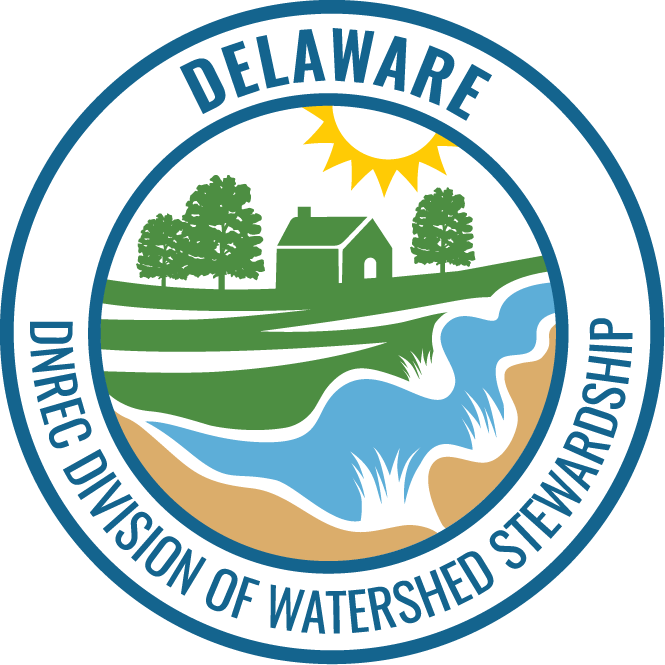
Facebook Twitter Instagram YouTube RSS Feed
Written on: December 14th, 2023 in Living Shorelines, Outreach
By Alison Rogerson, DNREC’s Wetland Monitoring and Assessment Program Hot off the press this month from the Delaware Living Shorelines Committee is a guidance document that aims to help landowners and professionals design and install nature-based shoreline stabilization projects. The Techniques and Application of Living Shorelines in Delaware guidance is the newest resource released by […]
Written on: September 8th, 2021 in Living Shorelines, Wetland Restorations
By Joshua Moody, Restoration Programs Manager, Partnership for the Delaware Estuary Since 2014, the City of Lewes, Delaware has been actively renovating the downtown waterfront park and shoreline along the Lewes-Rehoboth Canal, including native plant landscaping, playground features, walking paths, and educational signage. This work has been a part of a larger plan by the […]
Written on: March 22nd, 2021 in Living Shorelines
By Kenny Smith, Wetland Monitoring and Assessment Program (WMAP) When discussing living shorelines, you might not think the hardest and most unclear part would be getting your permits to accomplish this work. The permit process is sometimes difficult to navigate and can be confusing to someone not immersed in the environmental field. We decided to […]
Written on: December 9th, 2020 in Living Shorelines
By Kenny Smith, Wetland Monitoring & Assessment Program The Delaware Living Shorelines Committee members are often asked questions by landowners. Many of those questions relate to the suitability of their property for a living shorelines project. For example: is it possible to build a living shoreline on their property? Can a living shoreline protect their […]
Written on: May 13th, 2020 in Living Shorelines, Outreach, Wetland Restorations
At first glance, an oyster appears to be little more than, well, a bit of goo inside a rock. But actually, the humble oyster is an environmental warrior with an impressive bag of tricks up its sleeve, and it serves as a keystone species upon which depends the health of a marine ecosystem and the surrounding marsh.
Written on: March 5th, 2020 in Living Shorelines, Outreach, Wetland Restorations
Although it is happening around the world, there are some spots that are being affected more than others. The Mid-Atlantic Coast—including Delaware—is experiencing one of the highest rates of sea level rise in the U.S, second only to the Gulf Coast.
Written on: September 16th, 2019 in Living Shorelines
On a warm July morning not long after the official start of summer, some 2 dozen volunteers gathered at Sassafras Landing, an unimproved boat launch popular with kayakers and duck hunters inside the Delaware Division of Fish and Wildlife’s Assawoman Wildlife Area (AWA) near Frankford. Their mission: transplant nearly 5,200 plugs of native marsh grass onto what otherwise appeared to be a pristine white sand beach.
Written on: May 22nd, 2017 in Living Shorelines
Where to Begin and an Expedited Permitting Process. Guest Writers: Julie Molina, Katie Huegel and Matt Jones of DNREC’s Wetlands & Subaqueous Lands Section Delaware’s coastal communities face constant challenges from shoreline erosion. Historically, tidal wetlands act as the natural solution for shoreline stabilization. Tidal wetlands provide protection against shoreline erosion, a mechanism for flood […]
Written on: March 15th, 2017 in Living Shorelines
Living Shorelines Really Do Work! Tidal wetlands are incredible ecosystems that protect us and our properties from storm floods, provide habitat for fish and wildlife, clean our water, and store carbon from the atmosphere. When these wetlands are in good condition, they have the ability to keep up with sea level rise, allowing them to […]
Written on: May 30th, 2016 in Living Shorelines
Did you know that empty oyster shells can be reused for wetland restoration projects and that there are two oyster shell recycling programs in Delaware? One is run by the Center for the Inland Bays in Rehoboth Beach and the other is by the Partnership for the Delaware Estuary in Wilmington. Oysters have hard shells […]